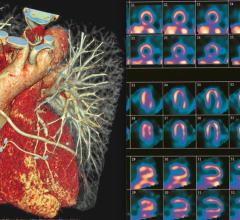December 8, 2017 — Cardiologists at NewYork-Presbyterian/Columbia University Irving Medical Center compared electrocardiographic findings among National Basketball Association (NBA) athletes with other published athlete groups in a new study. The study builds on prior research that established the first large-scale normative cardiac dataset for basketball players (and athletes of similar size as elite basketball players). Results from the new study demonstrated the criteria used to identify athletes at risk for exercise-triggered sudden cardiac death, known as the International Criteria, find a higher rate of false-positive results among NBA athletes. The results indicate a need for additional sport-specific guidelines to differentiate expected cardiac changes from abnormalities.
The findings were published on Dec. 6 in JAMA Cardiology.
“Elite basketball players, like other elite athletes, are known to develop heart muscle changes over time related to intensive athletic training,” said David J. Engel, M.D., a sports cardiologist at NewYork-Presbyterian/Columbia University Irving Medical Center, associate professor of medicine at Columbia University Irving Medical Center and the study’s senior author. “But, there has not previously been a study that specifically analyzes ECG changes in this athlete group."
In the current study, researchers analyzed the pre-season electrocardiograms (ECGs) of 519 NBA players from the 2013-14 and 2014-15 seasons to test the accuracy of the ECG guidelines (International Criteria) in elite basketball players. Among the sampled players, ECG results as identified by the International Criteria as abnormal were more common in older subjects and in those who demonstrated increased thickening of the left ventricular wall relative to their overall heart size. Athlete body size and race/ethnicity were not associated with the prevalence of abnormal ECGs.
“This data may help us continue to enhance player health and safety by distinguishing expected changes in a basketball player’s heart from underlying cardiac conditions,” said Engel. “The current ECG criteria cannot encapsulate how the wide variation in physiologic demands of different sports, and the varied baseline characteristics of athletes engaged in different sports, create varied changes in athletes' ECGs. We still have more work to do to determine if more specific criteria for evaluating ECG data in different sports is needed.”
The authors report no financial or other conflicts of interest. This work was supported by the National Basketball Association (NBA) as part of a medical services agreement between the NBA and Columbia University Irving Medical Center.
For more information: www.jamanetwork.com/journals/jamacardiology


 January 23, 2024
January 23, 2024 








